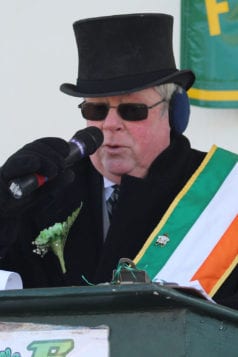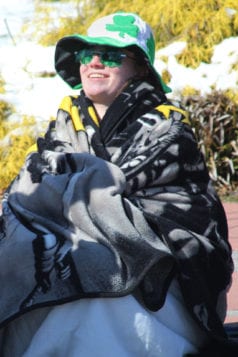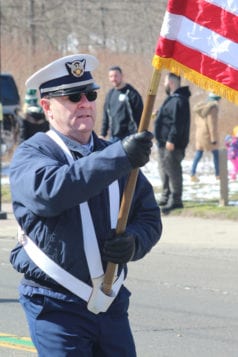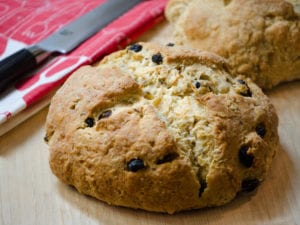Lipoic acid may have a significant effect on multiple chronic diseases
By David Dunaief, M.D.
Lipoic acid, also known as alpha lipoic acid and thioctic acid, is a noteworthy supplement. I am not a big believer in lots of supplements for several reasons: Diet contributes thousands more nutrients that work symbiotically; in the United States, supplements are not regulated by the FDA, thus there is no official oversight; and research tends to be scant and not well-controlled.

So why would I write about lipoic acid? It is a supplement that has scientific data available from randomized controlled trials, which are the gold standard of studies. In Europe, lipoic acid is classified as a drug, unlike the United States, where it is a supplement (1).
Lipoic acid is an antioxidant, helping to prevent free radical damage to cells and tissues, but also is a chelating agent, potentially removing heavy metals from the body. Lipoic acid is involved in generating energy for cells; it is an important cofactor for the mitochondria, the cell’s powerhouse. It may also boost glutathione production, a powerful antioxidant in the liver (1). We produce small amounts of lipoic acid in our bodies naturally. Lipoic acid may be important in chronic diseases, including Alzheimer’s, multiple sclerosis and diabetic peripheral neuropathy. Let’s look at the evidence.
Diabetic peripheral neuropathy
Diabetic peripheral neuropathy, or diabetic neuropathy, involves oxidative stress and occurs in up to half the population with diabetes. One in five patients, when diagnosed, will already have peripheral neuropathy. The most common type is distal symmetric polyneuropathy — damage to nerves on both sides of the body in similar locations. It causes burning pain, numbness, weakness and pins and needles in the extremities (2).
The best studies with lipoic acid focus on peripheral neuropathy with diabetes. In a double-blinded, randomized controlled trial (SYDNEY I), results showed that the total treatment score had improved significantly more for those receiving 600 mg lipoic acid by intravenous therapy compared to the placebo group (3). Also, individual symptoms of numbness, burning pain and prickling significantly improved in the group treated with lipoic acid compared to placebo.
The study involved 120 diabetes patients with stage 2 neuropathy. Its weakness was its duration; it was a very short trial, about three weeks. The author concluded that this therapy would be a good adjunct for those suffering diabetic neuropathy.
In a follow-up to this study (SYDNEY II), the design and the results were the same (4). In other words, in a second double-blinded, placebo-controlled trial, the lipoic acid treatment group showed significantly better results than the placebo group. There were 180 patients with a similarly short duration of five weeks.
Why include this study? There were several important differences. One was that lipoic acid was given in oral supplements, rather than intravenously. Thus, this is a more practical approach. Another difference is that there were three doses tested for lipoic acid: 600, 1,200 and 1,800 mg. Interestingly, all of them had similar efficacy. However, the higher doses had more side effects of nausea, vomiting and vertigo, again without increased effectiveness. This suggests that an oral dose of 600 mg lipoic acid may help treat diabetic peripheral neuropathy.
Dementia and Alzheimer’s
In a recent randomized, placebo-controlled trial involving Alzheimer’s patients, results were significantly better for lipoic acid (600-mg oral dose) in combination with fish oil, compared to fish oil alone or to placebo (5). The amount of fish oil used was 3 grams daily containing 675 mg docosahexaenoic acid and 975 mg eicosapentaenoic acid of the triglyceride formulation.
The duration of this pilot study was 12 months with 39 patients, and the primary end point was a change in an oxidative stress biomarker, which did not show statistical significance. However, and very importantly, the secondary end point was significant: slowing the progression of cognitive and functional decline with the combination of fish oil and lipoic acid. Minimental status and instrumental activities of daily living declined less in the combination treatment group. This was encouraging, although we need larger trials.
However, another study showed 900 mg lipoic acid in combination with 800 IU daily of vitamin E (alpha tocopherol strain) and 500 mg vitamin C actually mildly reduced an oxidative stress biomarker but had a negative impact on Alzheimer’s disease by increasing cognitive decline on a minimental status exam (6). What we don’t know is whether the combination of supplements in this study produced the disappointing effects or if an individual supplement was the cause. It is unclear since the supplements were tested in combination. The study duration was 16 weeks and involved 78 moderate to severe Alzheimer’s patients.
Multiple sclerosis
In a study involving rats, giving them high doses of lipoic acid resulted in slowing of the progression of multiple sclerosis-type disease (7). The mechanism by which this may have occurred involved blocking the number of inflammatory white blood cells allowed to enter the cerebrospinal fluid in the brain and spinal cord by reducing the enzymatic activity of factors such as matrix metalloproteinases.
I know this sounds confusing, but the important point is that this may relate to a human trial with 30 patients that showed reduction in the enzyme MMP (8). Thus, it could potentially slow the progression of multiple sclerosis. This is purely connecting the dots. We need a large-scale trial that looks at clinical outcomes of progression in MS, not just enzyme levels. The oral dose used in this study was 1,200 to 2,400 mg lipoic acid per day.
Interestingly, the 1,200-mg dose used in the human trial was comparable to the high dose that showed slowed progression in the rat study (9). This only whets the appetite and suggests potential. So, we have lots of data. What do we know? In diabetic neuropathy, 600 mg oral lipoic acid may be beneficial. However, in Alzheimer’s the jury is still out, although 600 mg lipoic acid in combination with fish oil has potential to slow the cognitive decline in Alzheimer’s disease. It also may have a role in multiple sclerosis with an oral dose of 1,200 mg, though this is early data.
Always discuss the options with your physician before taking a supplement; in the wrong combinations and doses, supplements potentially may be harmful. The good news is that it has a relatively clean safety profile. If you do take lipoic acid, know that food interferes with its absorption, so it should be taken on an empty stomach (1).
References: (1) lpi.oregonstate.edu. (2) emedicine.medscape.com. (3) Diabetes Care. 2003;26:770-776. (4) Diabetes Care. 2006;29:2365-2370. (5) J Alzheimer’s Dis. 2014;38:111-120. (6) Arch Neurol. 2012;69:836-841. (7) J Neuroimmunol. 2002;131:104-114. (8) Mult Scler. 2005;11:159-165. (9) Mult Scler. 2010;16:387-397.
Dr. Dunaief is a speaker, author and local lifestyle medicine physician focusing on the integration of medicine, nutrition, fitness and stress management. For further information, visit www.medicalcompassmd.com or consult your personal physician.
















































